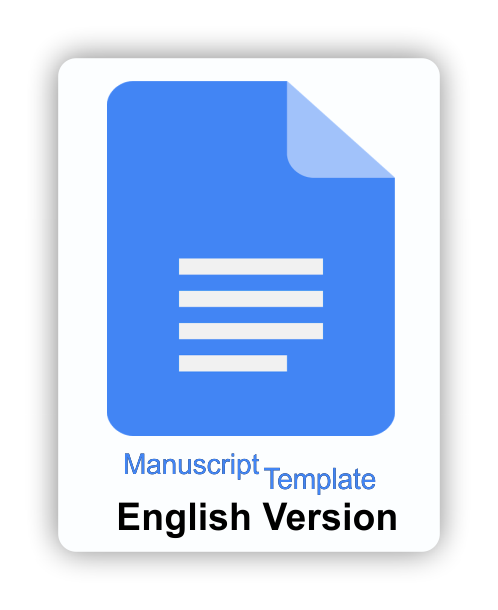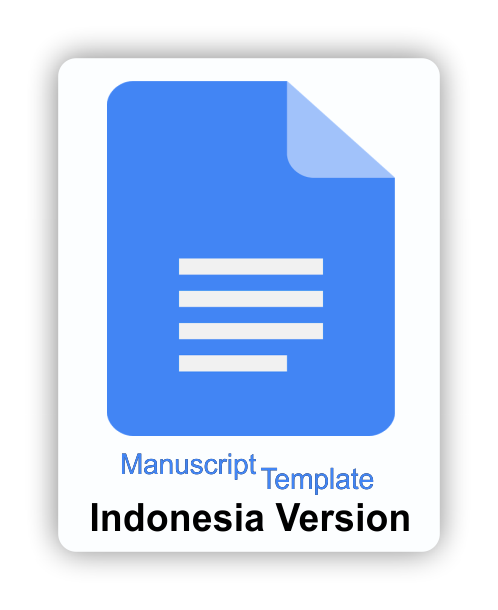The perceptions of high school teachers and students towards digital interest and literacy
Downloads
The increased application of information and communication technology (ICT) in society promotes its use in education to align instructional content with students' interests and future working lives. To achieve this, the human resources within education institutions must possess the ability to utilize technology and understand the students' capabilities. This descriptive study was conducted to establish the profile of students' and teachers' interests and perceived digital literacy abilities in high schools and their equivalents. An online questionnaire was used to collect data from West Java, West Kalimantan, and Jakarta high schools. The gathered data were processed with a simple quantitative technique. The data analysis collected by the questionnaire indicates that the respondents have a relatively high perception of digital literacy levels (encompassing operational, information, communication, strategic, and creative abilities), with some relatively low aspects, such as expressing opinions and creating things with ICT. Furthermore, it was also found that respondents exhibit a strong interest in using digital devices for learning, with video games, video processing programs, and graphic design software occupying the three least used digital media in schools but most desired by the respondents for integration.
AGI (Asosiasi Game Indonesia). (n.d.). AGI (Asosiasi Game Indonesia). Retrieved June 17, 2023, from https://www.agi.or.id/faq
Aka, K. A. (2017). Pemanfaatan teknologi informasi dan komunikasi (TIK) sebagai wujud inovasi sumber belajar di sekolah dasar. ELSE (Elementary School Education Journal): Jurnal Pendidikan Dan Pembelajaran Sekolah Dasar, 1(2), 28–37. https://journal.um-surabaya.ac.id/index.php/pgsd/article/view/1041
Akarawang, C., Kidrakran, P., & Nuangchalerm, P. (2015). Enhancing ICT competency for teachers in the Thailand basic education system. International Education Studies, 8(6), 1–8. https://doi.org/10.5539/ies.v8n6p1
Ala-Mutka, K. (2011). Mapping digital competence: Towards a conceptual understanding. Joint Research Centre: European Commission, 5–57. https://www.academia.edu/download/62706965/MappingDigitalCompetence20200401-127207-1xyc56f.pdf
Allcorrect. (n.d.). The Indonesian gaming market. Allcorrect Game Content Studio. Retrieved June 17, 2023, from https://allcorrectgames.com/insights/indonesia/
American Library Association (ALA). (n.d.). Digital library. Welcome to ALA's Literacy Clearinghouse. Retrieved December 9, 2022, from https://literacy.ala.org/digital-literacy/
Asari, A., Kurniawan, T., Ansor, S., & Putra, A. B. N. R. (2019). Kompetensi literasi digital bagi guru dan pelajar di lingkungan sekolah Kabupaten Malang. BIBLIOTIKA: Jurnal Kajian Perpustakaan Dan Informasi, 3(2), 98–104. http://journal2.um.ac.id/index.php/bibliotika/article/view/11592
Bhattacharjee, B., & Deb, K. (2016). Role of ICT in 21st century's teacher education. International Journal of Education and Information Studies, 6(1), 1–6.
Budiman, H. (2017). Peran teknologi informasi dan komunikasi dalam pendidikan. Al-Tadzkiyyah: Jurnal Pendidikan Islam, 8(1), 31–34. https://doi.org/10.24042/atjpi.v8i1.2095
Cheung, D. (2018). The key factors affecting students' individual interest in school science lessons. International Journal of Science Education, 40(1), 1–23. https://doi.org/10.1080/09500693.2017.1362711
Clark, L. A., & Watson, D. (2019). Constructing validity: New developments in creating objective measuring instruments. Psychological Assessment, 31(12), 1412–1427. https://doi.org/10.1037/pas0000626
Dewey, J. (2009). Interest and effort in education. Southern Illinois University Press.
Dewi, S. Z., & Hilman, I. (2019). Penggunaan TIK sebagai sumber dan media pembelajaran inovatif di sekolah dasar. Indonesian Journal of Primary Education, 2(2), 48–53. https://doi.org/10.17509/ijpe.v2i2.15100
Dinata, K. B. (2021). Analisis kemampuan literasi digital mahasiswa. Edukasi: Jurnal Pendidikan, 19(1), 105–119. https://doi.org/10.31571/edukasi.v19i1.2499
DiStefano, C., Shi, D., & Morgan, G. B. (2021). Collapsing categories is often more advantageous than modeling sparse data: Investigations in the CFA framework. Structural Equation Modeling: A Multidisciplinary Journal, 28(2), 237–249. https://doi.org/10.1080/10705511.2020.1803073
Eshet, Y. (2004). Digital literacy: A conceptual framework for survival skills in the digital era. Journal of Educational Multimedia and Hypermedia, 13(1), 93–106. https://www.learntechlib.org/p/4793/
Fu, J. (2013). Complexity of ICT in education: A critical literature review and its implications. International Journal of Education and Development Using ICT, 9(1), 112–125. https://www.learntechlib.org/p/111900/
Hague, C., & Payton, S. (2010). Digital literacy across the curriculum (1st ed., Vol. 4). Futurelab.
Harackiewicz, J. M., Smith, J. L., & Priniski, S. J. (2016). Interest matters. Policy Insights from the Behavioral and Brain Sciences, 3(2), 220–227. https://doi.org/10.1177/2372732216655542
Hermawan, H. D., Deswila, N., & Yunita, D. N. (2018). Implementation of ICT in education in Indonesia during 2004-2017. 2018 International Symposium on Educational Technology (ISET), 108–112. https://doi.org/10.1109/ISET.2018.00032
Hernandez, R. M. (2017). Impact of ICT on education: Challenges and perspectives. Journal of Educational Psychology-Propositos y Representaciones, 5(1), 337–347. https://eric.ed.gov/?id=EJ1139346
Iordache, C., Mariën, I., & Baelden, D. (2017). Developing digital skills and competences: A quick-scan analysis of 13 digital literacy models. Italian Journal of Sociology of Educatio, 9(1), 6–30. https://ijse.padovauniversitypress.it/2017/1/2
Jamilah, & Isnani, G. (2017). The influence of classroom climate, learning interest, learning discipline and learning motivation to learning outcomes on productive subjects. Jurnal Pendidikan Bisnis Dan Manajemen, 3(2), 85–96. https://doi.org/10.17977/um003v3i22017p085
Jamun, Y. M. (2018). Dampak teknologi terhadap pendidikan. Jurnal Pendidikan Dan Kebudayaan Missio, 10(1), 48–52. https://doi.org/10.36928/jpkm.v10i1.54
Jebb, A. T., Ng, V., & Tay, L. (2021). A review of key Likert scale development advances: 1995–2019. Frontiers in Psychology, 12, 1–14. https://doi.org/10.3389/fpsyg.2021.637547
Jenkins, H., Clinton, K., Purushotma, R., Robinson, A. J., & Weigel, M. (2006). Confronting the challenges of participatory culture: Media education for the 21st century. MacArthur Foundation.
Juliff, P. (2005). Real-life learning: Why, what and how? (Vol. 182, pp. 1–12). https://doi.org/10.1007/0-387-25997-X_1
Kaware, S. S., & Sain, S. K. (2015). ICT application in education: An overview. International Journal of Multidisciplinary Approach & Studies, 2(1), 25–32. https://www.academia.edu/download/36949501/04.01.2015.pdf
Khasanah, U., & Herina, H. (2019). Membangun karakter siswa melalui literasi digital dalam menghadapi pendidikan abad 21 (Revolusi Industri 4.0). PROSIDING SEMINAR NASIONAL PENDIDIKAN PROGRAM PASCASARJANA UNIVERSITAS PGRI PALEMBANG 12 JANUARI 2019, 999–1015. https://jurnal.univpgri-palembang.ac.id/index.php/Prosidingpps/article/view/2662
Kinematsu, H., & Barry, D. M. (2016). STEM and ICT education in intelligent environments. Springer.
Kurnianingsih, I., Rosini, R., & Ismayati, N. (2017). Upaya peningkatan kemampuan literasi digital bagi tenaga perpustakaan sekolah dan guru di wilayah Jakarta Pusat melalui pelatihan literasi informasi. Jurnal Pengabdian Kepada Masyarakat (Indonesian Journal of Community Engagement), 3(1), 61–76. https://doi.org/10.22146/jpkm.25370
Lavrakas, P. J. (2008). Questionnaire. In Encyclopedia of Survey Research Methods. Sage Publications, Inc. https://doi.org/10.4135/9781412963947.n424
Lestari, S. (2018). Peran teknologi dalam pendidikan di era globalisasi. EDURELIGIA; JURNAL PENDIDIKAN AGAMA ISLAM, 2(2), 94–100. https://doi.org/10.33650/edureligia.v2i2.459
Lim, C. P., Yan, H., & Xiong, X. (2015). Development of pre-service teachers' information and communication technology (ICT) in education competencies in a mainland Chinese university. Educational Media International, 52(1), 15–32. https://doi.org/10.1080/09523987.2015.1005425
Lowther, D. L., Inan, F. A., Daniel Strahl, J., & Ross, S. M. (2008). Does technology integration "work" when key barriers are removed? Educational Media International, 45(3), 195–213. https://doi.org/10.1080/09523980802284317
Marshall, G. (2005). The purpose, design and administration of a questionnaire for data collection. Radiography, 11(2), 131–136. https://doi.org/10.1016/j.radi.2004.09.002
McCombes, S. (2019). Descriptive research | Definition, types, methods & examples. https://www.scribbr.com/methodology/descriptive-research/
Mishra, P., Pandey, C., Singh, U., Gupta, A., Sahu, C., & Keshri, A. (2019). Descriptive statistics and normality tests for statistical data. Annals of Cardiac Anaesthesia, 22(1), 67–72. https://doi.org/10.4103/aca.ACA_157_18
Nahdi, D. S., & Jatisunda, M. G. (2020). Analisis literasi digital calon guru sd dalam pembelajaran berbasis virtual classroom di masa pandemi COVID-19. Jurnal Cakrawala Pendas, 6(2), 116–123. https://doi.org/10.31949/jcp.v6i2.2133
Ornstein, A. C., Levine, D. U., Gutek, G. L., & Vocke, D. E. (2011). Foundation of education. Cengange Learning.
Paul, G., & Glister, P. (1997). Digital literacy. Wiley Computer Pub.
Polit, D. F., & Beck, C. T. (2004). Nursing research: Principles and methods (7th ed.). Lippincott Williams & Wilkins.
Reddy, P., Sharma, B., & Chaudhary, K. (2020). Digital literacy. International Journal of Technoethics, 11(2), 65–94. https://doi.org/10.4018/IJT.20200701.oa1
Rivalina, R. (2015). Kompetensi teknologi informasi dan komunikasi guru dalam peningkatan kualitas pembelajaran. Jurnal Teknodik, 18(2), 165–176. https://doi.org/10.32550/teknodik.v0i0.121
Sarkar, S. (2012). The role of information and communication technology (ICT) in higher education for the 21st century. Science, 1(1), 30–41. https://citeseerx.ist.psu.edu/document?repid=rep1&type=pdf&doi=8582a7d8de9ca9172fbfd548af9c63e763e53e7d
Setiawan, D. (2018). Dampak perkembangan teknologi informasi dan komunikasi terhadap budaya. JURNAL SIMBOLIKA: Research and Learning in Communication Study, 4(1), 62–72. https://doi.org/10.31289/simbollika.v4i1.1474
Skinner, E., Furrer, C., Marchand, G., & Kindermann, T. (2008). Engagement and disaffection in the classroom: Part of a larger motivational dynamic? Journal of Educational Psychology, 100(4), 765–781. https://doi.org/10.1037/a0012840
Spante, M., Hashemi, S. S., Lundin, M., & Algers, A. (2018). Digital competence and digital literacy in higher education research: Systematic review of concept use. Cogent Education, 5(1), 1–21. https://doi.org/10.1080/2331186X.2018.1519143
Statista. (n.d.). Video games - Indonesia. Retrieved June 17, 2023, from https://www.statista.com/outlook/dmo/digital-media/video-games/indonesia
Su, C.-H., & Cheng, C.-H. (2015). A mobile gamification learning system for improving the learning motivation and achievements. Journal of Computer Assisted Learning, 31(3), 268–286. https://doi.org/10.1111/jcal.12088
Taherdoost, H. (2016). Validity and reliability of the research instrument; how to test the validation of a questionnaire/survey in research. International Journal of Academic Research in Management (IJARM), 5(3), 28–36. https://doi.org/10.2139/ssrn.3205040
Tondeur, J., Aesaert, K., Prestridge, S., & Consuegra, E. (2018). A multilevel analysis of what matters in the training of pre-service teacher's ICT competencies. Computers & Education, 122, 32–42. https://doi.org/10.1016/j.compedu.2018.03.002
Tondeur, J., Aesaert, K., Pynoo, B., van Braak, J., Fraeyman, N., & Erstad, O. (2017). Developing a validated instrument to measure preservice teachers' ICT competencies: Meeting the demands of the 21st century. British Journal of Educational Technology, 48(2), 462–472. https://doi.org/10.1111/bjet.12380
van Deursen, A. J. A. M., Helsper, E. J., & Eynon, R. (2016). Development and validation of the Internet Skills Scale (ISS). Information, Communication & Society, 19(6), 804–823. https://doi.org/10.1080/1369118X.2015.1078834
van Deursen, A. J., & van Dijk, J. A. (2014). Digital skills: Unlocking the information society. Springer.
van Laar, E., van Deursen, A. J. A. M., van Dijk, J. A. G. M., & de Haan, J. (2017). The relation between 21st-century skills and digital skills: A systematic literature review. Computers in Human Behavior, 72, 577–588. https://doi.org/10.1016/j.chb.2017.03.010
Vitanova, V., Atanasova-Pachemska, T., Iliev, D., & Pachemska, S. (2015). Factors affecting the development of ICT competencies of teachers in primary school. Procedia - Social and Behavioral Sciences, 191, 1087–1094. https://doi.org/10.1016/j.sbspro.2015.04.344
Widaryanto, W., & Sulfemi, W. B. (2016). Korelasi penguasaan TIK guru dengan kemampuan TIK siswa. EDUTECNO: JURNAL PENDIDIKAN DAN ADMINISTRASI PENDIDIKAN, 14(1), 1–8. https://osf.io/j23zs/download
Yaddanapudi, S., & Yaddanapudi, L. (2019). How to design a questionnaire. Indian Journal of Anaesthesia, 63(5), 335–337. https://doi.org/10.4103/ija.IJA_334_19
Zhou, D. (2019). Insights into the Indonesian games market. https://newzoo.com/resources/blog/insights-into-the-indonesian-games-market
The journal allows the author(s) to hold the copyright without restrictions. Finally, the journal allows the author(s) to retain publishing rights without restrictions
 | Jurnal Inovasi Teknologi Pendidikan by http://journal.uny.ac.id/index.php/jitp is licensed under a Creative Commons Attribution-ShareAlike 4.0 International License. |























